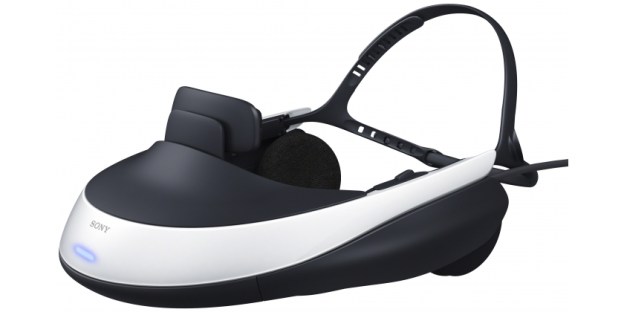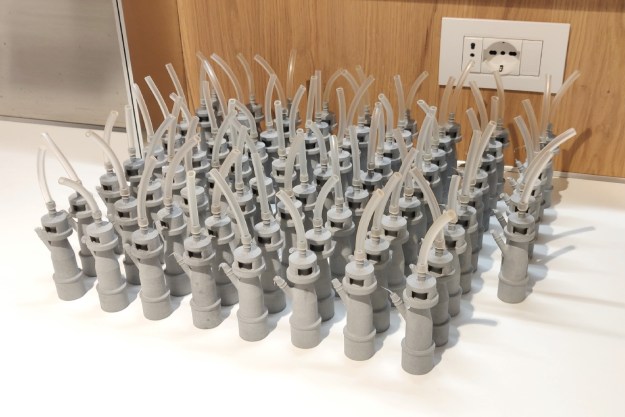 While at CES earlier this year, we came across Sony’s 3D, HD visor, a personal viewing device that inspired plenty of Tron/Star Trek/Lawnmower Man-related commentary. How could it not? Just look at it. The jesting was all in good fun anyway, since Sony seemed to have no intention of ever producing the unit for public purchase. Well, it turns out that wasn’t the case.
While at CES earlier this year, we came across Sony’s 3D, HD visor, a personal viewing device that inspired plenty of Tron/Star Trek/Lawnmower Man-related commentary. How could it not? Just look at it. The jesting was all in good fun anyway, since Sony seemed to have no intention of ever producing the unit for public purchase. Well, it turns out that wasn’t the case.
According to a recent statement from Sony, the “Personal 3D viewer” will be available in Japan as of November 11. Perhaps all the
Sony added a strap-style harness so that the device can be mounted on the noggin, leaving the hands free to operate a game controller or remote control or snatch a fistful of popcorn. Padding for the forehead is also new, but most of the original prototype’s features remain.
The viewer uses two 0.7-inch, 1280 x 720 resolution, OLED screens which Sony claims offer unprecedentedly deep back levels, contrast and color gradation. Since the viewer is stereoscopic in nature, both 2D and 3D content are supported and, because a separate screen is used for each eye, crosstalk is a non-issue. Two headphone speakers fixed on the sides of the viewer offer simulated 5.1 surround sound in four different surround modes, including cinema, game, pure A/V and standard. Volume control is built into the underside of the visor, along with a power button and cursor control.
The visor must be connected to an included processor box, which features both an HDMI input and output, allowing the user to watch on their old-school HDTV if they don’t feel like being quite so isolated from the rest of the world.
Pricing on the HMZ-T1 is reported to be in the neighborhood of 60,000 Yen — just under $800.
Editors' Recommendations
- 3DMakerpro’s Seal is a pocket-sized scanner to make next-gen precision 3D prints
- Need a last-minute Halloween costume? Check out these 3D-printable getups
- The future of making stuff: Inside the evolution of 3D printing with Formlabs
- Father’s Day Gift Idea: These cheap 3D printers are on sale for less than $300
- 3D printing lets hospitals make ventilator substitutes with common equipment





